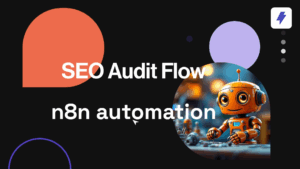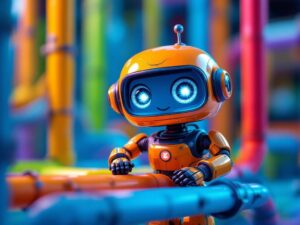In the ever-evolving landscape of digital content creation, the demand for innovative tools has given rise to AI vector image generators. This blog post will explore the functionalities, advantages, and best practices for incorporating these powerful tools into your creative projects. Along the way, we’ll subtly introduce Straico, a cutting-edge AI platform that seamlessly integrates content and image generation capabilities.
Table of Contents
ToggleUnderstanding AI Vector Image Generators:
AI vector image generators leverage advanced artificial intelligence algorithms to craft visually stunning, resolution-independent images. Their applications span a variety of fields, including digital marketing, web design, and branding.
How Does it Work?
These generators employ deep learning models to analyze patterns, shapes, and color schemes in existing images. This knowledge is then applied to generate new vector illustrations, combining machine learning and image recognition for a nuanced approach.
Benefits of Using AI Vector Image Generator
1. Enhanced Time Efficiency:
The incorporation of AI vector image generators goes beyond mere time reduction; it introduces a paradigm shift in the speed and efficiency of design workflows. By swiftly interpreting complex design requirements and automating intricate tasks, these generators empower content creators to allocate their time more strategically. This not only expedites the creative process but also allows designers to focus on refining conceptual aspects, ideation, and fine-tuning, thereby fostering a more robust and iterative creative cycle.
2. Elevated Quality Assurance:
The hallmark of AI-generated vectors lies not only in their speed but also in their unwavering commitment to quality. The algorithms embedded in these generators are meticulously trained on extensive datasets, honing their ability to produce professional-grade illustrations consistently. This commitment to quality is a game-changer for maintaining a polished visual identity across diverse design projects. Designers can confidently rely on the precision and excellence of AI-generated vectors, fostering a sense of trust in the creative outcomes.
3. Versatile Customization and Adaptability:
AI vector image generators embrace the concept of versatility by offering a plethora of customization options. This level of adaptability empowers users to fine-tune generated images to align seamlessly with specific branding guidelines or unique design requirements. From adjusting color schemes to modifying styles and complexities, the user retains creative control. This not only streamlines the process of tailoring visuals to meet specific project needs but also allows for exploration and experimentation, fostering a dynamic and personalized design approach.
4. Strategic Cost Savings:
Beyond the evident time and quality advantages, the integration of AI vector image generators into design workflows brings about significant cost savings. The traditional route of hiring professional graphic designers can incur substantial expenses. AI generators offer a cost-effective alternative by automating complex vector creation processes. This not only minimizes the financial burden associated with hiring skilled designers but also ensures that budget constraints do not hinder the pursuit of high-quality, visually compelling designs. The strategic allocation of resources contributes to a more efficient and economically sustainable creative ecosystem.
Choosing the Best AI Vector Image Generator:
Several noteworthy AI vector image generators have gained prominence:
- Deep Dream Generator:
Known for its surreal and dreamlike output, Deep Dream Generator utilizes neural networks to create unique and imaginative vector designs.
- Runway ML:
Runway ML is a versatile platform that not only generates AI art but also allows users to experiment with a wide range of machine learning models for creative projects.
- Vectornator:
Vectornator combines AI technology with a user-friendly interface, making it a go-to choice for designers seeking a seamless vector image creation experience.
- InkHunter:
Specializing in vector-based tattoos, InkHunter utilizes AI to superimpose tattoo designs on users’ bodies in real-time, offering a unique and interactive experience.
- Adobe Illustrator with Sensei:
Adobe Illustrator, a stalwart in the design industry, has integrated Adobe Sensei, an AI and machine learning platform, enhancing its vector creation capabilities with intelligent features.
- Figma’s Auto Layout:
Figma, a collaborative design tool, incorporates AI-driven Auto Layout features. It streamlines the design process by automatically adjusting elements based on content changes.
- Gravit Designer:
Gravit Designer combines vector design with an intuitive interface, offering AI-driven features that simplify complex design tasks and streamline workflows.
- Affinity Designer:
Affinity Designer employs AI-powered tools to enhance precision and streamline the design process, making it a powerful choice for both beginners and experienced designers.
Some of these tools use Stable Diffusion a latent text-to-image diffusion model capable of generating photo-realistic images given any text input.
Best Practices for Using AI Vector Image Generators:
- Collaborate and Share Insights:
Encourage collaboration among users of AI vector image generators. Share insights, tips, and techniques to foster a community of creatives pushing the boundaries of what these tools can achieve.
- Integrate Feedback Mechanisms:
AI tools thrive on feedback. Integrate mechanisms for users to provide feedback on generated designs, contributing to the refinement and improvement of the AI algorithms.
- Consider Ethical Design:
As AI plays a significant role in the creative process, it’s essential to consider ethical design practices. Be mindful of biases in training data and ensure that AI-generated content aligns with ethical standards.
- Explore Niche Applications:
AI vector image generators have applications beyond traditional design. Explore niche areas such as medical illustration, scientific visualization, or educational materials to unlock new possibilities.
Conclusion:
In conclusion, AI vector image generators open new avenues for visual content creation. Their time-saving capabilities, consistent quality, and customization options make them indispensable tools for designers and businesses. As you explore the world of AI-driven creativity, consider incorporating the power of these generators into your projects and discover new levels of efficiency and innovation.
Additionally, platforms like Straico quietly pave the way for seamless content creation, enhancing your creative experience without overpowering it. With the evolving landscape of AI in design, staying informed about the latest tools and practices ensures that you are at the forefront of creative innovation. Embrace the possibilities, collaborate with fellow creatives, and let AI be a powerful ally in bringing your imaginative visions to life.


